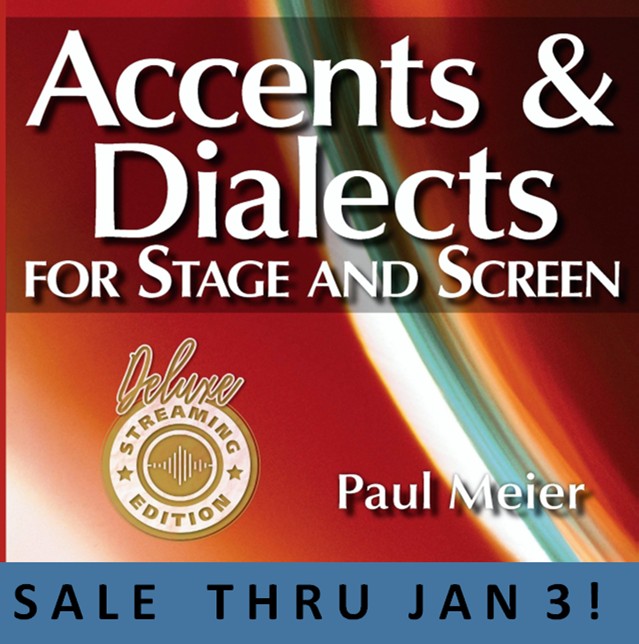Maryland 5
Listen to Maryland 5, a woman in her 50s from Baltimore, Maryland, and Dover, Delaware, United States. Click or tap the triangle-shaped play button to hear the subject.
Both as a courtesy and to comply with copyright law, please remember to credit IDEA for direct or indirect use of samples. IDEA is a free resource; please consider supporting us.
BIOGRAPHICAL INFORMATION
AGE: 50s
DATE OF BIRTH (DD/MM/YYYY): 1950s
PLACE OF BIRTH: Baltimore, Maryland
GENDER: female
ETHNICITY: Caucasian
OCCUPATION: radiologist
EDUCATION: university
AREA(S) OF RESIDENCE OUTSIDE REPRESENTATIVE REGION FOR LONGER THAN SIX MONTHS:
She has also lived in Dover, Delaware.
OTHER INFLUENCES ON SPEECH: N/A
The text used in our recordings of scripted speech can be found by clicking here.
RECORDED BY: Patrick Letterii
DATE OF RECORDING (DD/MM/YYYY): 21/10/2008
PHONETIC TRANSCRIPTION OF SCRIPTED SPEECH: N/A
TRANSCRIBED BY: N/A
DATE OF TRANSCRIPTION (DD/MM/YYYY): N/A
ORTHOGRAPHIC TRANSCRIPTION OF UNSCRIPTED SPEECH:
No, I love, I love my patients. They come in and they’re not feeling well. Um, a lot of them have chronic pain, back pain, knee pain, whatever. Um, and I, I, I love people. I enjoy people. And they always say, “Oh it’s nice to have somebody smiling,” and they’re nervous, they’re scared, you know. But, um, I enjoy what I do. I’ve been doing it probably about 35 years. But, you know, we’re there because of the patients, and they do hurt and they’re not feeling good. And sometimes they can be very difficult. Um, then you get the patients that have Alzheimer’s, and and things like tha’; it’s just sad. It’s just, and you think, this could be your mother or your father, and you try to be as compassionate as you can, but I love, I love what I do. And it’s interesting, it’s fun, it’s always something different. And we just went to digital so we have to know how to do the durn computer and, you know, it’s a … but it’s fun and I’m learning, and you know, at my age it’s .. I’m game for it, I’m, you know, it’s fun.
TRANSCRIBED BY: Lynn Watson
DATE OF TRANSCRIPTION (DD/MM/YYYY): 12/12/2008
PHONETIC TRANSCRIPTION OF UNSCRIPTED SPEECH: N/A
TRANSCRIBED BY: N/A
DATE OF TRANSCRIPTION (DD/MM/YYYY): N/A
SCHOLARLY COMMENTARY:
Overall tendency of phonetic reduction. Characteristic posture of raised tongue (dorsum). Also specific instances of lip rounding as described below. Raised posture of the anterodorsum of the tongue results in the pronunciation of [ɛ̈ʊ̆] in many Baltimore and Maryland dialects in stressed syllables, heard in this sample in words such as “rainbow” and “no” ([ˈɹeɪnbɛ̈ʊ̆̆] and [nɛ̈ʊ̆̆]). Another key feature of dialects from the region related to raising of the dorsum can be observed in the pronunciation of the spelled letter “l.” Generally speaking, in all but the initial position, pronunciation of “l” is often labialized [ɫʷ]. When “l” follows a front or central unrounded vowel or is syllabic, frequently only the posterodorsum is raised, but the tip/blade of the tongue is NOT raised–lip rounding appears to substitute for raising of the tongue tip/blade. This often results in the substitution of a back rounded vowel [ʊ] for “l”. Examples are found in “miracle,” “physical,” and “result” ([ˈmɪəɹə̆ kəʊ̆], [ˈfɪzəkəʊ̆], and [ɹiˈzəʊ̆t]). Where “l” follows a back rounded vowel or diphthong [ɔ] [oʊ̆] — perhaps because the posterodorsum is already raised and lips rounded — often no sound substitutes for the “l.” In those instances, I would suggest that the back rounded vowels essentially “stand in” for both the vowel AND the lateral approximate. Examples are found in “falls” and “gold” ([fɔz] and [goʊ̆d]).
Other notable pronunciations in the sample:
token [tɛ̈ʊ̆kn̩] into [ˈɛntə] path [pæ̝θ] man [mæ̝n] over [ɛ̈ʊ̆və˞] increases [ɛnˈkrisəz] [ˈɛnkrisəs]
COMMENTARY BY: Lynn Watson
DATE OF COMMENTARY (DD/MM/YYYY): 12/12/2008
The archive provides:
- Recordings of accent/dialect speakers from the region you select.
- Text of the speakers’ biographical details.
- Scholarly commentary and analysis in some cases.
- In most cases, an orthographic transcription of the speakers’ unscripted speech. In a small number of cases, you will also find a narrow phonetic transcription of the sample (see Phonetic Transcriptions for a complete list). The recordings average four minutes in length and feature both the reading of one of two standard passages, and some unscripted speech. The two passages are Comma Gets a Cure (currently our standard passage) and The Rainbow Passage (used in our earliest recordings).
For instructional materials or coaching in the accents and dialects represented here, please go to Other Dialect Services.
 IDEA: International Dialects of English Archive
IDEA: International Dialects of English Archive




